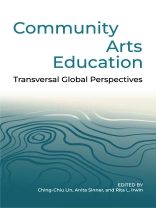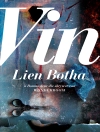This edited collection offers global perspectives on the transverse, boundary-blurring possibilities of community arts education.
Invoking ‘transversality’ as an overarching theoretical framework and a methodological structure, 55 contributors – community professionals, scholars, artists, educators and activists from sixteen countries – offer studies and practical cases exploring the complexities of community arts education at all levels.
Such complexities include challenges created by globalizing phenomena such as the COVID-19 pandemic; ongoing efforts to achieve justice for Indigenous peoples; continuing movement of immigrants and refugees; growing recognition of issues related to equity, diversity and inclusion in the workplace; and the increasing impact of grassroot movements and organizations.
Chapters are grouped into four thematic clusters – Connections, Practices, Spaces and Relations – that map these and other intersecting assemblages of transversality. Thinking transversally about community art education not only shifts our understanding of knowledge from a passive construct to an active component of social life but redefines art education as a distinctive practice emerging from the complex relationships that form community.
Innehållsförteckning
Acknowledgements
Introduction
Ching-Chiu Lin
PART 1: Transversal Connections
Chapter 1: Twenty-First Century Winter Journey: Exploring Comics, Adaptation and Community Art Education
Julian Lawrence
Chapter 2: The University as an Institute of Permanent Creation: Developing ‘a Gift for Living’ in Neoliberal Times
Raphael Vella
Chapter 3: Seeing What Unfolds: New Ways of Exploring Community Art Education in Formal Learning Spaces
Kathryn Coleman and Marnee Watkins
Chapter 4: ‘Making University’: The Role of Corporeality, Matter and Physical Spaces to Create a Sense of Community
Sara Carrasco Segovia
Chapter 5: I Wish You a Good Life: Embedding Intergenerational Learning Into Pre-Service Education Through Art, Community and Environment
Geraldine Burke
Chapter 6: Community-Based Art Education: Promoting Revitalization and Eco-Cultural Resilience for Cultural Sustainability
Timo Jokela and Mirja Hiltunen
Part 2: Transversal Practices
Chapter 7: Making Meaning, Creating (in) Community: An International Dialogue on Community Art Education Within Early Childhood Contexts
Geralyn (Gigi) Yu, Alex Halligey and Judith Browne
Chapter 8: Identifying Images as a Strategy for Emotional Interaction with the Environment: Neighbourhoods as Engraving Support
Jessica Castillo Inostroza
Chapter 9: We Are Small, but We Have Loud Voices: Children Leading the Way to Support Community Connections Through Art
Sue Girak
Chapter 10: Infernal Learning: Becoming Members of Academic Communities
Anniina Suominen, Tiina Pusa, Minna Suoniemi, Eljas Suvanto and Elina Julin
Chapter 11: Seeds in the Wind! A/r/tography School and Teacher Formation
Leisa Sasso and Mirian Celeste Martins
Chapter 12: Transversalities Through Transdisciplinary Pedagogies: A South African Perspective on Community Engaged Art Education
Merna Meyer
Chapter 13: Building Bridges in the Community Through Opening Minds Through Art: An Intergenerational Abstract Art Programme for People Living with Dementia
Stephanie H. Danker, Elizabeth Lokon and Casey Pax
Part 3: Transversal Spaces
Chapter 14: International Art Symposia as a Space of Knowledge Creation and Creative Engagement
Maria Huhmarniemi and Katja Juhola
Chapter 15: Collaborative Thinking, Creating and Learning on a Remote Greek Island: Towards Sustainable Community Art Education
Sophia Chaitas and Georgia Liarakou
Chapter 16: Finding Possibility in the Liminality of Socially Engaged Arts: Fostering Learning and Wellbeing with Refugee Youth
Kate Collins
Chapter 17: Conversations with Gardens: Artful Spaces in Community Art Education
Trish Osler
Chapter 18: Community Dance as an Approach to Reimagine Place in Aotearoa/New Zealand
Pauline Hiroti and Rose Martin
Chapter 19: Pedagogical Implications in La Austral, S.V. de C.V.: A Collective Performative-Storytelling Project by Artist Pablo Helguera and DREAMers
Eunji Lee
Chapter 20: Community Arts Education: Experiencing and Creating Our World
Shelley Hannigan and Merinda Kelly
Part 4: Transversal Relations
Chapter 21: Colors of Connection: Public Art Making as an Activating Force for Community Art Education
Lynn Sanders-Bustle, Christina Mallie and Laurie Reyman
Chapter 22: Residing in Pedagogical Spaces Through Community Cultural Production
Jing Li
Chapter 23: Intercultural Eye for Art: Becoming a Member of a Global Community Through Arts-Based Exchange
Kazuyo Nakamura, Hye-Seung (Theresa) Kang, Wataru Inoue, Leah H. Morgan, Hisae Aoyama, Hannah Shuler, Atsuo Nakashima, Cheryl J. Maxwell, Takunori Okamoto and Mari Sankyo
Chapter 24: The Creation of a Community Teaching Artist Certificate Programme: Professionalization in the Gig Economy
Dustin Garnet
Chapter 25: Creative for Life: Planning and Delivering Intergenerational Art Programmes
Jodie Davidson and Miles Openshaw
Chapter 26: Croatian Naïve Art as an Incentive for Multimodal Research with Children
Helena Burić and Nikolina Fišer Sedinić
Chapter 27: Visual Ecologies: Artistic Research Transversing Stable, Dynamic and Interstitial Relations in an Australian Settler Colonial Context
Kim Snepvangers
Notes on Contributors
Om författaren
Rita L. Irwin (Ed.D.) is distinguished university scholar and professor of art education and curriculum studies at the University of British Columbia, Vancouver, Canada. She was a classroom teacher and arts specialist before embarking upon an academic career. While her research interests include teacher education, curriculum practices and sociocultural issues, she is best known for her work in expanding how we might imagine and conduct practice-based research methodologies like a/r/tography through collaborative and community-based collectives.
Contact: University of British Columbia, Department of Curriculum and Pedagogy, 2125 Main Mall, Vancouver, British Columbia, V7E 2Y3, Canada.












